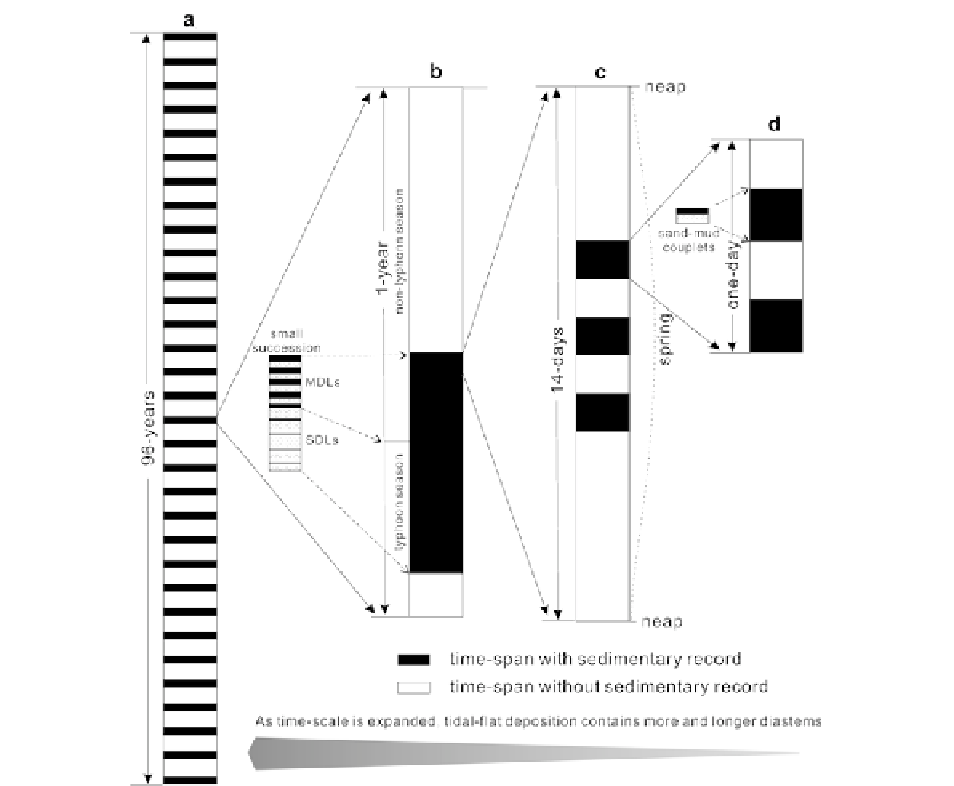Geology Reference
In-Depth Information
Fig. 9.31
The stratigraphic completeness of an open-coast
intertidal-flat succession examined at different time scales, show-
ing that a complete stratigraphic unit at a longer term was exam-
ined to fill with diastems at a shorter time scale. The intertidal-flat
succession is roughly 4 m thick, deposited in ~96 years in the
Changjiang Delta. The thickness of individual small successions
and sand-mud couplets is generally a few centimeters to decime-
ters, and a few millimeters to centimeters (After Fan et al.
2002
)
succession reflects this trend of variations, grading
conformably upward from the lower intertidal sand,
through the middle intertidal mud-sand mixture, to the
upper intertidal mud (Fig.
9.32
, Semeniuk
1981
; Li
and Li
1982
; Li et al.
1992
). The (shelly) sand facies
generally consists of thick wave-rippled or massive
sand layers with clay lenses or seams, and thick sand-
dominated layers (SDLs, Fig.
9.26
) of storm genera-
tion, developing cross-stratified bedding of slight
bioturbation. The heterolithic mud and sand facies is
characterized by abundant wavy bedding with moderate
bioturbation and the small fining-upward successions
consisting of alternative sand- and mud-dominated
layers in roughly equal thickness. The mud facies
grades upward from the upper bare to vegetated inter-
tidal flats and usually continuing toward the supratidal
flats, lithologically from finely laminated silt and clay
with silty parallel to wavy laminae of a few grains to
millimeters to massive mud with rippled sand lenses,
scattered pigmentation mottles, and abundant in situ
salt-marsh-plant rootlets or mangrove stumps. The
laminated to bioturbated mottled mud may be inter-
bedded with lensed beds of muddy and shelly sand of
several decimeters thick or more, which are swash
bar/chenier ridge deposits produced by storm waves
(Semeniuk
1981
; Li et al.
1992
).

